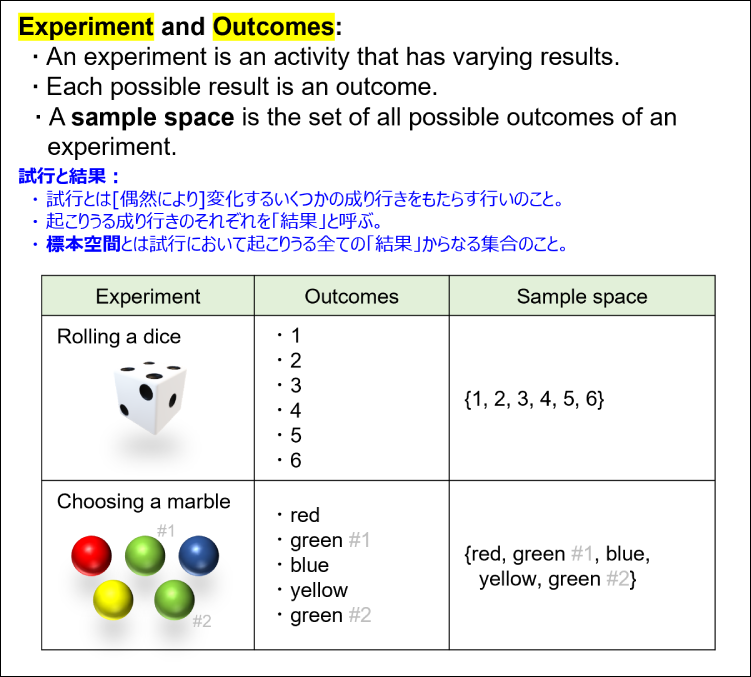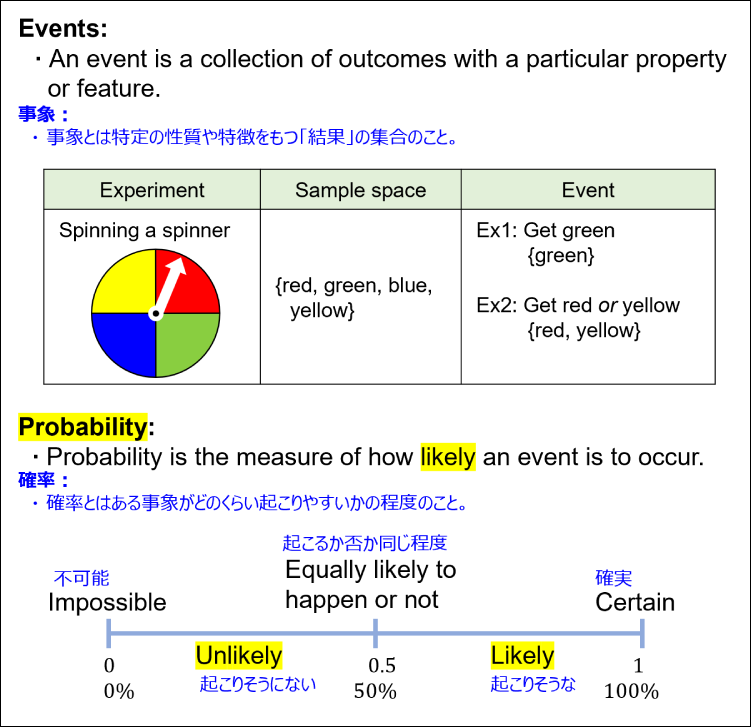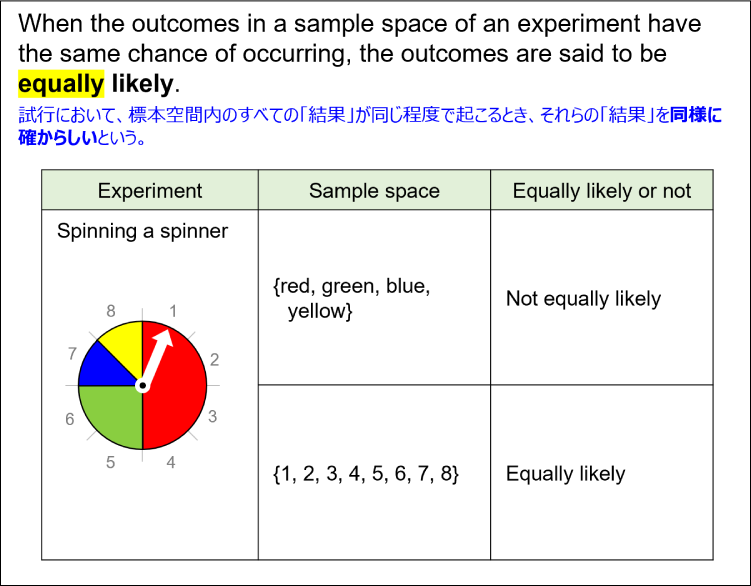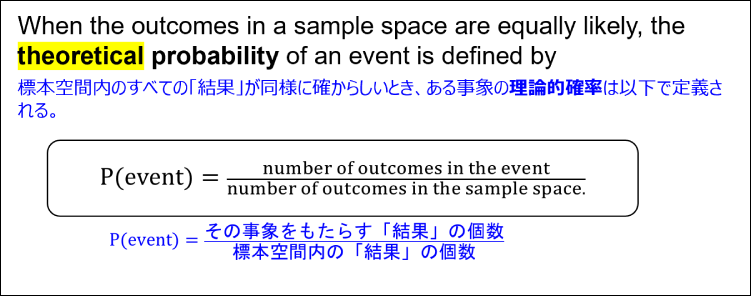STEM-Plus Content offers K-12 math and other STEM content in both English and Japanese.
The content aids in vocabulary acquisition for both English and Japanese learners.
How does it achieve this?
Through the content, learners grasp words and phrases more intuitively because they already know their meanings in their native language.
It is like learning the word “apple” by looking at a picture of one.
STEM-Plus Content facilitates easy learning of abstract yet useful words.
To ensure effective and efficient learning, the content is designed to be concise and illustrative.
Learners can easily understand the material through images and examples.
In addition, the content provides useful tips on math and other STEM subjects, supporting
academic success in these important fields.
How to use:
Carefully selected English words and phrases related to “Probability” are highlighted in yellow in the images below. The words are also summarized at the bottom of this page.
We recommend reviewing them regularly during your daily math studies to enhance your vocabulary.
TERMS, DEFINITIONS, AND ILLUSTRATIONS
Experiment and Outcomes
- experiment: 試行とは[偶然により]変化するいくつかの成り行きをもたらす行いのこと。
- outcome: 起こりうる成り行きのそれぞれを「結果」と呼ぶ。
- sample space: 標本空間とは試行において起こりうる全ての「結果」からなる集合のこと。
「場合の数」という言い方ではなく、試行の「結果」(その全体を標本空間)という、そのままの言葉が使われています。

Experiment and outcomes
Events and Probability
- events: 事象とは特定の性質や特徴をもつ「結果」の集合のこと。
- probability: 確率とはある事象がどのくらい起こりやすいかの程度のこと。

Events and probability
Equally Likely
- equally likely: 試行において、標本空間内のすべての「結果」が同じ程度で起こるとき、それらの「結果」を同様に確からしいという。
「同様に確からしい」は日本語としては意味がピンと来にくく、何か特別なことを表す数学用語では、と思われてしまうこともあります。
実際は「確率が同じ」といっているだけなのに。
英語では「equally likely(同様に起こりやすい)」と言葉として意味がピンと来やすいと思います。
以下に分かりやすい例を示しました。
4つの色が円を等分している上記の例(equally likely)とも対比してみてください。
「同様に確からしい」のイメージがより鮮明になると思います。

Equally likely outcomes and not equally likely outcomes
Finding Theoretical Probability
- theoretical probability: 標本空間内のすべての「結果」が同様に確からしいとき、ある事象の理論的確率は以下で定義される:
P(event) = {その事象をもたらす「結果」の個数}/{標本空間内の「結果」の個数}。

Theoretical probability
WORDS AND PHRASES
experiment 実験
outcome 結果(≒result)
probable 多分
likely ありそうな ⇔unlikely
certain 確かな;一定の
equal 平等な;等しい
theory 理論
TIPS
・”Outcomes”「場合の数」and “equally likely”「同様に確からしい」 are more easily understood in English textbooks compared to Japanese textbooks.



